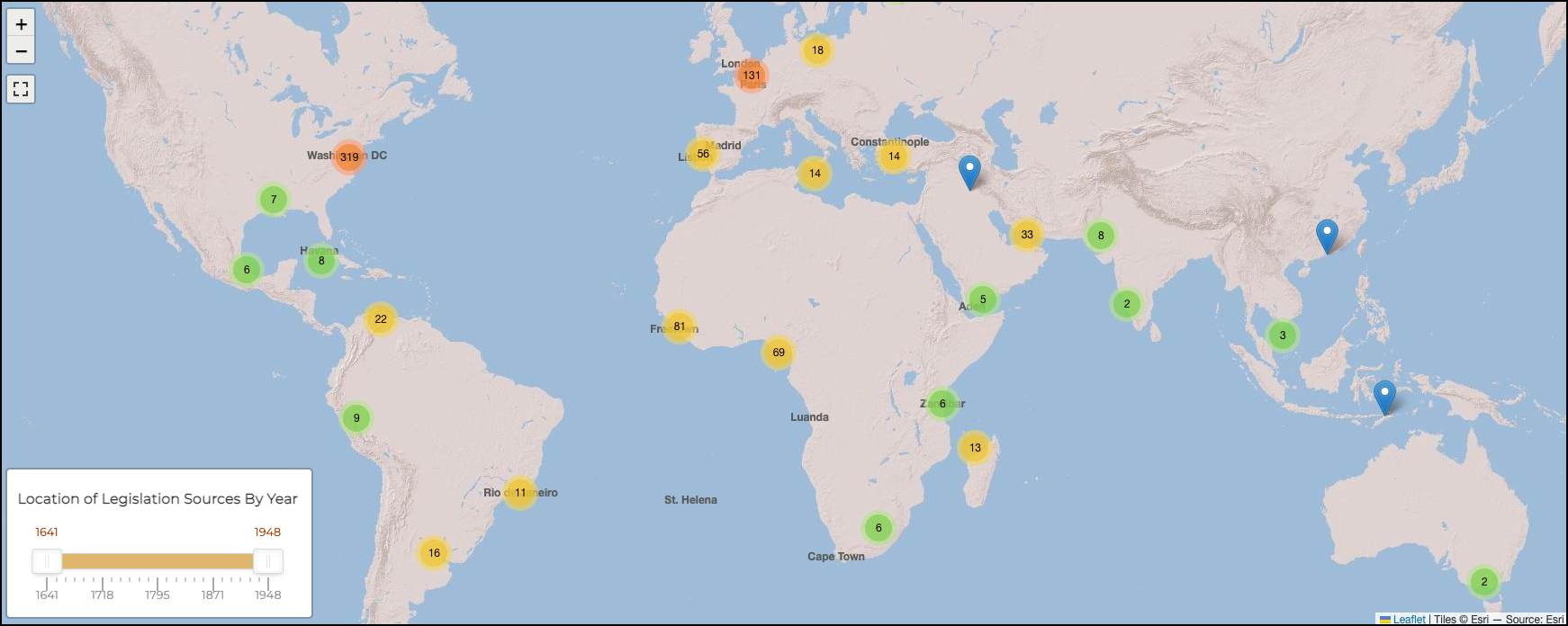"Liberated Africans" in Global Perspective, 1800-1920
|
The Courts & Cases dataset shows where upwards of 700,000 "Liberated Africans" were indentured between 1800 and 1920. Other data-driven maps include Departure Regions and for the Slave Trade Blockade. |
During the industrial revolution and rise of capitalism, the abolition and suppression of the slave trade advanced legal mechanisms to disguise another type of slavery, known paradoxically as “Liberated Africans.” Over 700,000 enslaved people from Africa were "emancipated" through state intervention and involuntarily subjected to indentures or conscriptions lasting several years. Datasets and digital materials presented herein provide for an unprecedented analysis of the paradox of the suppression of the slave trade, viewed both as a humanitarian effort and a crime against humanity. The term "Liberated Africans" is therefore used with heavy quotation marks throughout this website to emphasize the contradiction and hypocrisy.
Through an extensive database of people, places, events, and sources, it is possible to explore on a government-by-government, court-by-court, and case-by-case basis this historical injustice. The growing digital archive contains records of slave ships departing Africa, slave trade blockades, trial proceedings, registers of contracts of indenture, settlement strategies, and imagery in several different languages. This digital reference resource sheds light on one of the most complex and tragic episodes in human history.
|
The Anti-Slavery Legislation Archive currently hosts over 800 laws, treaties, conventions, and decrees surrounding the abolition of the slave trade and slavery from around the world until the UN Universal Declaration of Human Rights. |
This publication aims to organize primary historical sources related to the suppression of the slave trade. The preservation of the "Registers of Liberated Africans" has been central to the creation of this data-driven digital archive, as they are among the most detailed and comprehensive records of enslaved individuals intercepted from the African slave trade. Various governments compiled these records in accordance with anti-slavery laws, resulting in the registration of over 200,000 "Liberated Africans" by name, age, sex, height, and physical description, sometimes including ethnic scarifications and other biographical information. However, these records were not created for humanitarian purposes to document the vicitims of slavery, but rather to monitor the forced contracts involuntary indenture or conscription that lasted several years.
The long-term benefits of this reference and teaching resource consolidates collections of primary source materials related to the people involved in the history of the suppression of the slave trade. This approach facilitates research, education, and public programming, while allowing for deeper analyses related to the global history of slavery and abolition. Providing access to digitized primary sources allows users to verify data in real time, while providing context to read against the grain of colonial sources. The mission is to provide reliable and easy-to-use materials on the migration and dispersal of Africans in the long nineteenth century to inspire research into the history of Africa and the African diaspora.

